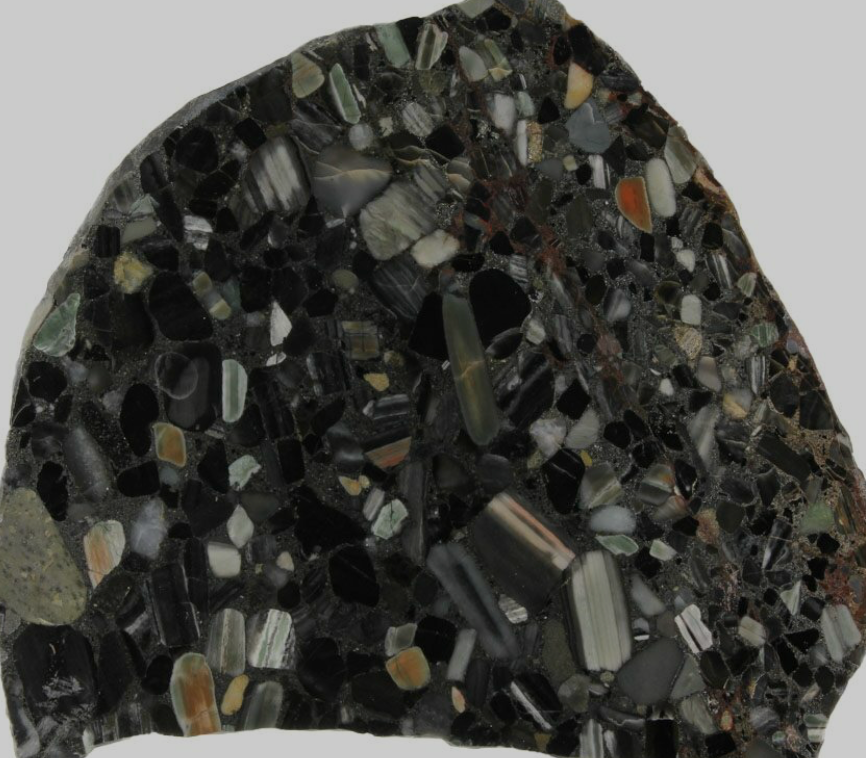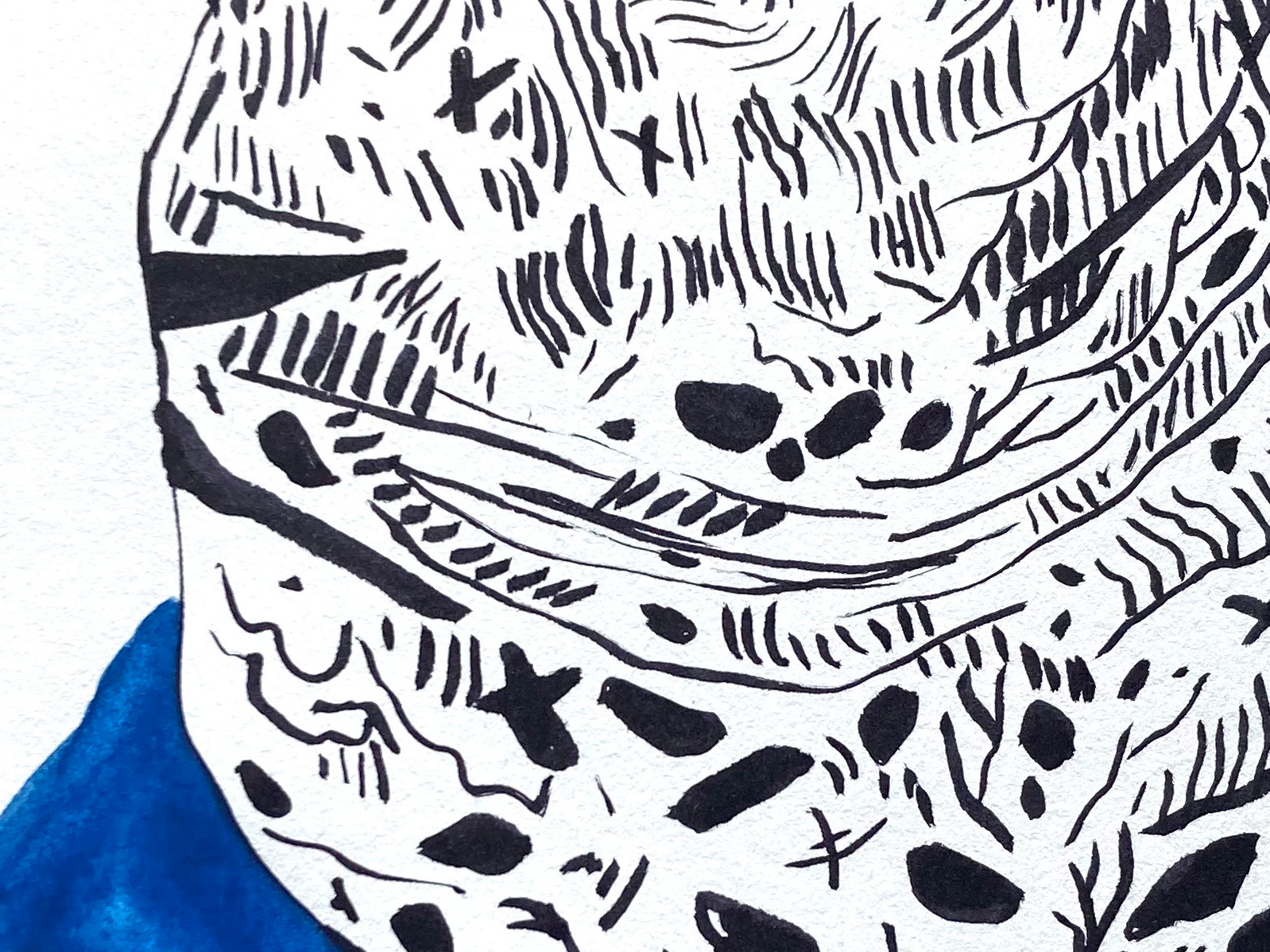While many artworks get stored, used or appreciated for some amount of time, everything ends up in the Earth’s crust eventually. In the last 7 decades, plastic production has increased by approximately 239 times and water pollution is causing those plastics to end up in our own bodies. As people who are consistently collecting materials and forming them into work, it is never too late for fine artists to consider the environmental impacts of their practices, so the landscapes that inspire many makers continue to thrive and we can encourage more ethical art practices for the future.
After dabbling with many mediums during my education, I realized every studio I worked in was producing waste. From my first drawing classes, to printmaking and especially the hazard bucket in the pottery studio, extra material was always being created and left behind. Art waste comes in many forms but there seems to be three main points of waste creation within most art practices: 1) Sourcing supplies, 2) unused material made during production and 3) finishing a piece of work. If artists can become more ethically aware during these steps, we can lower the carbon footprint of the art market, get the most out of our art materials and market our work towards ethically conscious customers. I am not trying to tell every artist to save the world with their work or change their themes and focuses. I am also not claiming to have a cure-all solution to this major pollution problem. But, I believe that the creators of the world can make major changes to their environments with minor adjustments to their practices.
The first step to a low-waste art practice is having ethical material sources. Let’s be real: Amazon is never the right choice for art materials. While they have made strong efforts in Europe and India to use 100% recyclable packaging, they unfortunately cannot figure out how to make the same switch in the US (where they make the most sales). The “Sustainability” page on their website is embarrassingly bare and, as one of the largest online retailers in the world, their significant pollution should not be ignored. By avoiding Amazon entirely, you are going to find higher quality products while dodging fees for shipping and finding companies that actually care about the globe. With this in mind, look for materials as locally as possible. Starting with tools and products made in your hometown or state is ideal, but it can be out of the budget for up-and-coming creators. If you are waiting to invest in high-end tools, communities such as Facebook Marketplace, Ebay, Craigslist, the Nextdoor app and most secondhand shops are the best places for low-budget art materials. Make a post asking for a specific item because there might just be someone in your town who has what you need! In Colorado alone there are over a dozen secondhand art supply stores that give mediums and tools a second chance at being used. You can also try to think of waste created from non-art facilities, such as cardboard from grocery stores or plastic buckets that are often thrown out by bakeries.
A new medium I have been experimenting with is dryer lint. A material that is full of acrylic and polyester fibers from the 1000s of laundry loads we run during our lives. Most of us cannot switch to a 100% natural fiber wardrobe, so I have been collecting it and trying to incorporate the strange fluff into my work. Another way to obtain sustainable supplies was demonstrated by Del Harrow, a ceramic and sculpture professor at CSU who found local clay in a neighborhood construction site during the pandemic. This exploration for local materials was necessary during a time when many art stores were closed and travel was limited, but also shows that you can find ethical, free materials if you just keep an eye out for them.
If you have put in the extra effort and collected some ethical supplies, now it is time to think of the life of your work. Thinking of our materials as part of a cycle is crucial when making art more ethical. The extra effort and investments to obtain sustainable supplies is worth it IF we aren’t wasting any of that material while creating our work. This doesn’t mean you can’t have bits and pieces leftover or that you have to use every drop of paint on your palette. Simply being more aware of how much you are “wasting” and where that waste is going can make a big impact on the lifecycle of art materials. The first step I would suggest is collecting your art waste. If you know that you have no use for it, try to find someone who does, by posting on online art communities or marketplaces. Selling your scraps such as fabric, wood chips, wire, 3D printer filament and more in bulk is common on Etsy. This means you could get some of your money back and you know that your art waste is not being added to the local landfills.
Once you found ethical sources for materials and somewhere for your scraps to find new life, your last step would be to finish your work. Many paintings, drawings and sculptures need to be “set” in some way to last as long as possible. I say, change your perspective on what “finished work” is. Does putting something behind a protective layer actually make it look better? This idea of permanence is challenged by one of my favorite artists, Andy Goldsworthy. With the goal of bringing people outside to appreciate the wonders of nature, Goldsworthy’s sculptures collaborate with the element of time to show the power of natural phenomena. By using local stone, sticks, clay, ice and more, his large-scale works are left outdoors to take on a lifetime of edits from Mother Nature. I know many artists do not want their work to live outside, the point is that we need to consider alternatives to traditional finishing sprays, resin coatings and plastic sleeves. This might be the hardest part in ethical artmaking; we all want our work to last and to be seen as if it was just finished. But we are also increasing ocean pollution, air pollution and toxifying the ground we stand on by adding acrylic, glue, printed merch, and plastic packaging into landfills.
Some of these steps may not be achievable or applicable to your work. Artists, understandably, have different styles and preferred mediums which require specific materials. But as the oceans suffer, forests burn and US resources are being favored over protected wildlife, I strongly encourage artists to pay attention to their waste-producing habits. With the ability to influence an endless audience, artists hold the power to persuade others to follow their lead. Let us begin a new age of creators who always have Earth’s health in mind and a heightened awareness of what they are sharing with the world!
Don’t Know Where To Start?
Check out this Carbon Footprint Calculator, specifically made for artists to understand the impact of their material use!
Sources
Andy Goldsworthy:
https://andygoldsworthystudio.com/ , “Stone” 1994.

